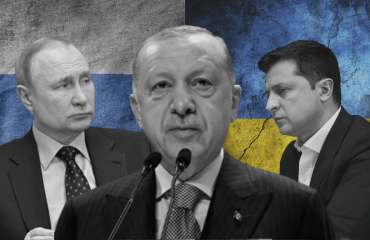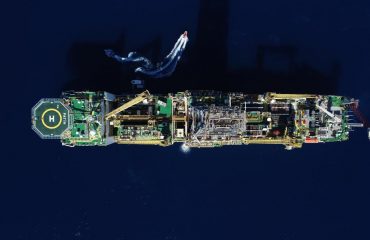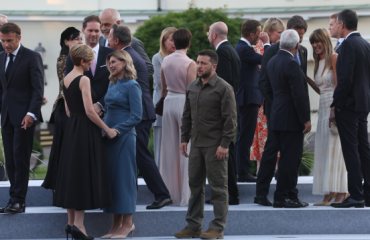

It was announced by Washington on April 6 that the US State Department approved the sale of 40 F-16 fighter jets and 80 modernization kits that Turkey demanded in a letter to the Congress.
“The Biden administration believed that a potential sale of jets to Turkey would be in line with US national security interests and also serve NATO’s long-term unity,” letter read, Reuters reported.
The aforementioned letter signed by Naz Durakoğlu, the Deputy Undersecretary of State for Legal Affairs of the USA, was sent to the Congress on March 17. It was written as a response to 50 Congress Members who penned a letter on February 4 asking not to allow the sale of the F-16 to Turkey due to “Erdogan’s undevotion to NATO commitments and human rights violations”.
It is understood that the vengeful approach of the US administration, stemming from Turkey’s purchase of the S-400 defense missile systems from Russia, has come to an end. It has been said that Turkey’s removal from the F-35 program in retaliation for the S-400 is a “sufficient retaliation”.
When the Members of Congress (MoCs) sent that letter on February 4, the Ukraine problem had not yet turned into a crisis by Russia’s offensive. In the days of the US State Department latter, dated March 17, the discussion was the possibility of the crisis turning into a third world war.
Ukraine Crisis brings the USA closer to Turkey.
The trails of F-16 signs ?
YetkinReport reported on March 18 that Ukraine crisis “made the approval of F-16 easier for the US”. We did not have the letter at that time. But on March 17, US Ambassador to Ankara Jeff Flake had hosted a reception for the diplomats of NATO member countries at his residence, marking the 70th anniversary of Turkey’s NATO membership. In his speech at the reception, where Vasyl Bodnar, Ukraine’s Ambassador to Ankara, was the guest of honor, Flake made an uncommon comment. After repeating the well-known fact that Turkey has NATO’s second largest army, he emphasized that Turkey also has NATO’s second largest F-16 fleet. Pursuing that comment, we reported that F-16 sales approval may be soon.
We had no information that Ambassador Flake was aware of that letter when he said this. But we tried to interpret the signs correctly.
What had an impact on these developments was not only Turkey’s Ukraine diplomacy, but also its foreign policy shift gravitating to centripetal forces rather than centrifugal forces which paved a way for normalization process with the United Arab Emirates, Israel, Armenia, France, the Netherlands and Greece.
Behind the US Administration’s letter to Congress on F-16 lies Turkey’s intense diplomatic effort.
What happened before the letter on F-16?
Russia began its invasion of Ukraine on the night of February 23. Turkey declared on February 28 that it would not allow the passage of warships through the Straits in accordance with the Montreux Convention; Russian ships withdrew their request for passage.
US Deputy Secretary of State Wendy Sherman arrived in Ankara on March 5 and met with Deputy Foreign Minister Sedat Önal. In the meeting, two countries agreed to coordinate on the Ukraine Crisis. Önal reminded Sherman of the need to initiate the “Strategic Mechanism”. It was first discussed during the meeting of President Tayyip Erdoğan and US President Joe Biden on October 31, 2021.
Erdogan spoke on the phone with Putin on March 6. After this meeting, it was announced that Foreign Minister Mevlüt Çavuşoğlu, Russian and Ukrainian Foreign Ministers Sergey Lavrov and Dimitro Kuleba would meet in Antalya on March 10. The first high-level political meeting since the beginning of the crisis was to be held in Turkey. On the same day, Biden called Erdogan on the phone and praised not only his efforts in Ukraine. He also voiced his appreciation to Erdoğan’s efforts to get closer with the countries of the region; Erdogan had hosted Israeli President Isaac Herzog in Ankara the day before.
Diplomacy continues
On March 17, when the letter was written and the US Ambassador gave the signal to those who understood, Çavuşoğlu met Kuleba in Lviv, he had met Lavrov the day before in Moscow. Shuttle diplomacy was ongoing.
NATO leaders held an extraordinary meeting on March 24 due to the Ukraine Crisis. Meanwhile, Turkey announced that it would not participate in the US sanctions against Russia. Erdogan called Putin again on March 27. As a result, on March 29, the Russian and Ukrainian delegations held their second meeting in Turkey, this time in Istanbul.
Victoria Nuland, Deputy Undersecretary of State for Political Affairs of the USA, came to Ankara on April 4, within the framework of her European tour to be held between 2 and 6 of April. After the meeting with Önal, it was announced that the “Strategic Mechanism” was launched. The next day, the US Department of Commerce delegation came to Ankara. On April 6, the F-16 letter was leaked to the press in Washington.
Minister of National Defense Hulusi Akar also played an important role behind the scenes in both the implementation of the Montreux Convention and F-16 diplomacy.
From here on
The summary is as follows: Turkey’s active and balanced policy in the Ukraine Crisis, both fulfilling its NATO commitments, supporting Ukraine and not fighting with Russia, caused the USA to approach Turkey.
Will this approach continue? Will this approach show itself in Turkey’s demands, for example, its demands against the PKK/YPG in Syria? For example, will the US lift its implicit embargo on the new model SAMP-T air defense missiles that Turkey is working on with France and Italy?
Another dimension is that, the United States was among the 10 Western countries that protested Osman Kavala’s detention last fall which led to the “persona non grata” crisis with Turkey. The “human rights violations” emphasis in the letter of the MoCs were partly related to this issue. Will the developments reveal that Washington’s interest in democratization and human rights issues in Turkey is for political leverage when it comes to US military interests?
It will be possible to see in the coming weeks and months.


